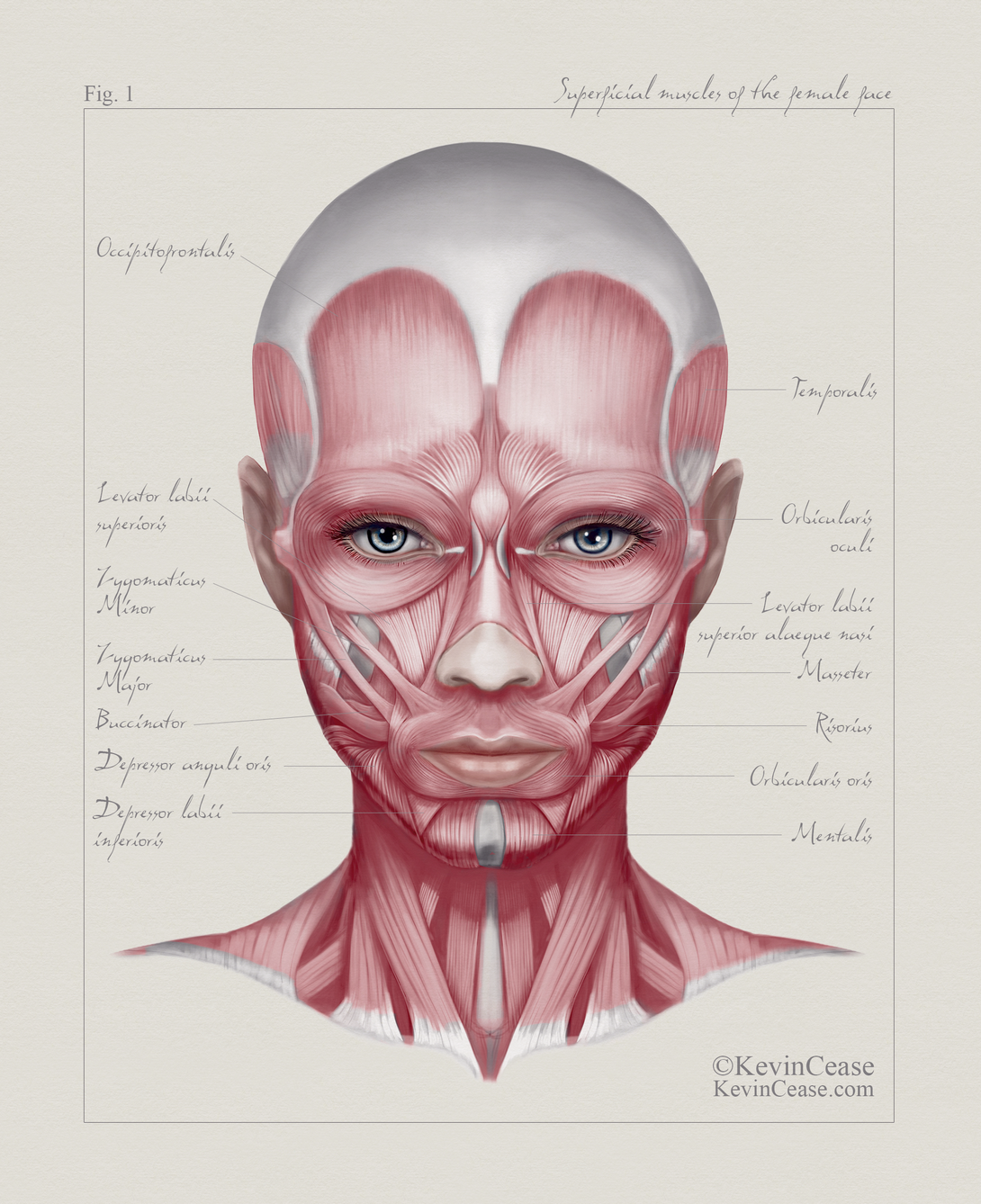The Facial Action Coding System was published by Paul Ekman and Wallace Friesen in Facial Action Coding System: A Technique for the Measurement of Facial Movement in 1978. This publication has forever changed the modern way of thinking about emotions and the approach to their recognition and research. The key assumption of the authors was the empirically confirmed thesis that human emotions were innate and universal, i.e., independent of the place on earth; people, as representatives of the same species, experience emotions that manifest themselves in the same facial expressions (people from different cultural backgrounds were examined, also those that had never had any contacts with the Western civilization before). In the final version of the system, Ekman distinguished 7 emotions that he called the basic ones. These include: happiness, sadness, surprise, fear, anger, disgust and contempt.
Analysis of facial expressions
Emotions and motivation
facial action coding system, Paul Ekman 70'
It turns out that regardless of what language we speak and what standards of behaviour have been instilled in the process of our education, we show happiness, sadness, anger, etc. in a similar way. Subsequent research has shown that the universality of emotions also applies to those blind since birth and even children in mother’s womb in which, about 6 months of age, you can notice the first facial expressions of joy and disgust. The fact that our face betrays authentic emotions and, consequently, intentions and attitudes has almost instantly become the subject of special interest of all professionals whose daily work is directly related to reading human emotions (employees of marketing and HR departments, psychologists, policemen, employees of intelligence agencies). From our perspective, skills related to the accurate recognition of emotional states of others will have critical meaning for everyone working in sales, customer service and, of course, those whose most important role is to manage others.
During our training and courses, according to Paul Ekman’s guidelines, we practice four basic skills:
- Mindfulness of emotions that arise within us before we even begin to speak or do something,
- Conscious control over selection of own behaviour in order to be able to achieve goals important for us without harming others,
- Recognition of emotions in others based on subtle movements of facial muscles, body posture and tone of voice,
- Caution in using the information obtained this way in relation to feelings of other people.
To practice and master the accuracy of reading facial expressions, we use computer software developed based on a manual analysis of 10,000 photographs depicting the above-mentioned emotions. The application creates a face grid composed of 500 key points that enable to monitor the movements of individual muscles.

m.jarzmowy większy
AU 12: Zygomaticus major
Wyraźne unoszenie kącika ust - uśmiech i pogarda
m.policzkowy
AU 14: Buccinator
Obniżanie kącika ust - pogarda
m.okrężny ust
AU 23: orbicularis oris
Rozciąganie i zaciskanie ust (kreska) - gniew
7 basic emotions
17 face muscles
Facial Acion Coding System (AU)
Happiness: 6+12; Sadness: 1+4+15; Surprise: 1+2+5B+26;
Fear: 1+2+5+20+26; Anger: 4+7+20; Disgust: 9+15+16;
Contempt: R12A+R14A
AU 1 – frontal muscle (middle part) – Raising the inside of the eyebrows
AU 2 – frontal muscle (lateral part) – Raising the outside of the eyebrows
AU 4 – procerus muscle, depressor supercilii muscle, corrugator supercilii muscle – Lowering the eyebrows
AU 5 – elevating muscle of upper eyelid, superior tarsal muscle – Raising the upper eyelids
AU 6 – orbicularis oculi (pars orbitalis) – Raising the cheeks
AU 7 – orbicularis oculi (pars palpebralis) – Closing the eyelids
AU 9 – levator labii superioris alaeque nasi – Wrinkling the nose
AU 12 – zygomaticus major – Raising the corner of the lips (clear)
AU 14 – buccinator – Smile with lowered corners
AU 15 – depressor anguli orist – Lowering the corner of the lower lip
AU 16 – depressor labii inferioris – Lowering the lower lip
AU 20 – risorius – Stretching the lips
AU 23 – orbicularis oris – Lip stretched and tightened (line)
AU 26 – masseter; relaxed temporalis and internal pterygoid – Jaw dropping
The analysis of the above-mentioned movements of facial muscles allows the accurate recognition of the emotional state of the person or persons we are currently talking to. Whitefox is particularly interested in all the permanent stiffening of facial muscles and other muscles throughout the entire body. A trained mask of indifference, an artificial smile, withheld rage and anger, or suspension of the body in a hook-, column-, hanger- or halter-like shape tell us about the history and specific difficulties in dealing with negative emotions. Understanding the importance of tensions and stiffeners and their mitigation brings relief and supports overstepping the limits of the preferred logic of action and motivations currently in force.

AU6
AU12
Happiness 6 + 12
Action Unit 6: Raising the cheeks; Action Unit 12: Raising the corner of the lips
The expression of happiness is a signal that we experience pleasure, amusement, relief, peace, satisfaction, pride or excitement. By being happy, we tell others that what is happening “is good and we encourage them to come into contact with us and be together” (Paul Ekman). In our work, we meet many angry, sad and frightened people. We rarely see joy on their faces. The constant message to others: “I am unhappy; I am scared; you upset me; I will do something to you soon” makes our colleagues and employees want to avoid us; they will not pass information on to us; they will not talk about their problems or ideas. Many people we work with do not realise the huge professional potential hidden in the job that gives you satisfaction and allows you to be a “cheerful person”.

AU1
AU4
AU15
Sadness 1 + 4 + 15
Action Unit 1: Raising the inside of the eyebrows; Action Unit 4: Lowering the eyebrows; Action Unit 15: Lowering the corner of the lower lip (lips turned down)
Sadness is a reaction to loss and a signal to others that we need support and care. When we become sad, we are saying to others: “I have lost something important to me: comfort me.” It happens that we meet people whose difficult professional and private issues have taken away their optimism, hope, energy for work and faith in others. Our actions in such situations focus on training the skills that enable them to experience sadness in the context of the whole life history and together with their close ones who often wait for many years to deal with their pain. During training, we also teach managers and leaders how they can, in their roles, help others deal with this difficult feeling.

AU1
AU2
AU5B
AU26
AU26
Surprise 1 + 2 + 5B + 26
Action Unit 1: Raising the inside of the eyebrows; Action Unit 2: Raising the outside of the eyebrows; Action Unit 5B: Raising the upper eyelids (slightly); Action Unit 26: Jaw dropping
“Surprise is the shortest of all emotions. It lasts up to a few seconds. After a while, when we know what is happening, surprise turns into fear, amusement, anger, disgust, etc., depending on the surprise we are dealing with”. (Paul Ekman). This short-lasting emotion is especially important when recognising a lie. We are hardly ever good at pretending to be surprised. During the training in the field of communication, negotiations and B2B sales, we teach how to use subtle movements of facial muscles to recognise when someone is trying to cheat us.

AU1
AU2
AU5
AU20
AU26
Fear 1 + 2 + 5 + 20 + 26
Action Unit 1: Raising the inside of the eyebrows; Action Unit 2: Raising the outside of the eyebrows; Action Unit 5: Raising the upper eyelids; Action Unit 20: Stretching the lips; Action Unit 26: Jaw dropping
Fear appears in emergency situation and tells others: “help me”. This is a reaction to the possibility of physical or mental pain. We often feel fear during public appearances, before talking to our boss who does not control his anger, during audits strategic for the company or when we see that we will probably not achieve the set goals and will experience the related consequences. Fear destroys our effectiveness in dealing with difficult situations if it causes only paralysis and panic.

AU4
AU7
AU23
Anger 4 + 7 + 20
Action Unit 4: Lowering the eyebrows; Action Unit 7: Closing the eyelids; Action Unit 20: Lips stretched and tightened (in a line)
Anger is a reaction to a barrier/obstacle or a situation in which we think that we are being treated unfairly. When you get angry, you tell the other person: “get out of my way”. Anger differs from other emotions in that it creates the greatest threat to others. Constant control, constant irritability, outbursts of anger and, finally, wrong personnel decisions – all this makes us a threat to our team. The pressure we experience makes it harder and harder to accept other people’s perspective and understand their needs. During our training, we show the exercises that prevent from plunging into behaviour leading directly to psychopathy, narcissism and borderline.

AU9
AU15
AU16
Disgust 9 + 15 + 16
Action Unit 9: Wrinkling the nose; Action Unit 15: Lowering the corner of the lower lip; Action Unit 16: Lowering the lower lip
Disgust can occur in response to tastes, smells, tactile impressions, thoughts, views, sounds, other people, actions of these people, and even in relation to ideas (Paul Ekman). As we wrinkle our nose, we tell others: “stay away from this, take it away from here”. The expression of disgust is of particular importance to us when designing and implementing focus group interviews (especially in the food industry). It is also a serious warning signal if it appears many times during team work. Diagnostic peculiarity: “the expression of wife’s disgust addressed to her husband during a conversation in which both of them were to resolve a conflict proved to predict how much time the couple would spend separately in the next four years. Wife’s disgust usually appeared in response to her husband’s withdrawal”. (Gottman, 2001).

R12AU
RAU14
Contempt R12A + R14A
Action Unit R12A: Raising the corner of the lips; Action Unit R14A: Smile with lowered corners
“We feel contempt only for people and their behaviours, not for tastes, smells or tactile sensations. […] Disrespectful aversion to people or their behaviours makes us feel better from them”. (Paul Ekman). The most important function of contempt is to signal a sense of superiority, strength and a higher status. Paradoxically, this emotion most often appears on the faces of people who are uncertain of their position and value, but who want to be seen as extremely intelligent, educated, extremely hard-working, often very family-oriented. If a contemptuous smile becomes a fixed element of our facial expressions, it is very difficult to build relationships with others. Customers, colleagues and employees sense this “bizarre” sense of superiority (they distance themselves and laugh).
